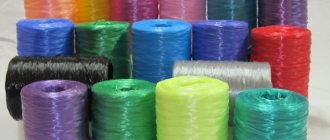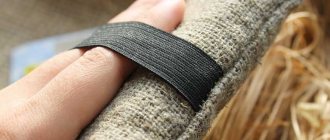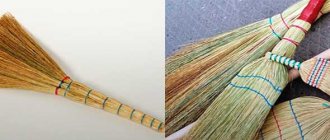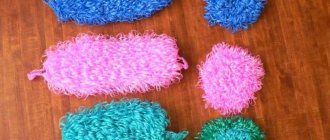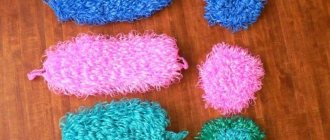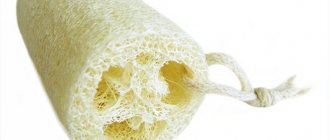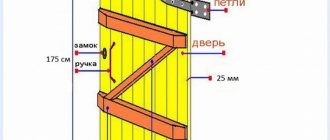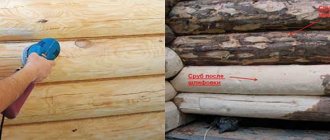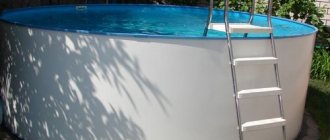Some people, when buying a jute washcloth in a store, are terribly disappointed with it - because... she could turn out to be tough, rude, ugly. But over time it becomes softer, you get used to it. So, a knitted jute sponge or, as it is now called, an eco-scrub with a peeling and deep cleansing effect is just a good gift, if not for dishes, then certainly for the skin. But where can I get it? If you have nowhere to buy it in your city, or you just like to do handicrafts, you like crafts made from juto, then you are welcome - all you have to do is make it yourself.
Washcloth "Mitten" made of jute, crocheted
Master class from Natalia “ECO Gift with Pilling Effect”
If the video materials were not enough, read on for a brief description of how to make a washcloth-mitten for the shower.
To make a washcloth you will need office jute and a hook.
Stationery jute weighing 1.5 kg (to be absolutely precise - 1569 grams)
In general, you can find any crochet pattern you want to try. The only thing is that the pattern should be semicircular on one side of the mitten, and straight on the other.
Ready “front” side and “back”.
Here is the result - the “face” and “back” are connected, a loop is attached for hanging on a hook. The finished washcloth-mitten is slightly larger than the palm of your hand so that you can put it on your hand:
One washcloth takes about 75 grams of thread and approximately 3 hours of time, if you take your time, periodically glancing with one eye at the computer screen with a movie and sipping tea.
Next, wash the washcloth, dry it and steam it with an iron, so it will become more pleasant to the touch.
Helpful information
Before we start, let’s reveal some secrets of the craft:
- For knitting, you can use a variety of materials: polyester, cotton, jute, nylon, twine (propylene foam or other composition). Sometimes craftswomen even knit from nylon tights and plastic bags;
- The most commonly used material is polypropylene thread. Items knitted from twine have a brighter color, are wear-resistant, they are able to create a good foam and dry quickly enough. The optimal choice of hook is No. 3 or 4;
- The rigidity of the finished product directly depends on the thickness of the threads. For children, it is better to choose a softer washcloth;
- The chosen color of thread for the washcloth can match the color scheme of the bathroom;
- Before first use, keep the product in boiling water to make it softer;
- Adding foam rubber to the washcloth will improve the formation of foam; for this, the design must be in the form of a pipe.
The simplest round sponge for washing dishes made of jute
Jute thread is very stiff, so it is better to use a large metal hook. For one sponge you will need a small skein of jute thread (costs from 70 rubles per 100 meters, sold in craft stores), a hook (preferably thick and metal, since loose knitting is needed), scissors.
A round sponge is quite easy to make if you already have at least minimal crochet skills (remember your school craft lessons). You need to cast on five air loops, then loop. Next, knit in a circle, not forgetting about double crochets and adding the number of air loops at your discretion. Do not knit tightly, but pull out the loops, since the sponge should have gaps so that it dries well after use. You can knit some kind of pattern - it depends on your imagination. The round piece should be slightly larger than your palm in size, since then the sponge will “sit” in the water. You need to knit two identical ones, and then fasten them together with the same jute, leaving a small hole for the soap. The ends of the threads can be cut off, hidden, or made into a loop - you can hang a sponge on it next to the sink.
Such a sponge can completely decompose in 3 months, compared to the usual hundreds of years of decomposition of an ordinary commercial washcloth. You can imagine how many of our washcloths are already in landfills, especially if we changed them often, as recommended by all hygiene standards..
Compared to a regular sponge, a jute sponge wins on at least two points: firstly, it completely decomposes in three months (to do this, after cleaning, just put it on the bottom of a flower pot - this will also serve as drainage for the plant), and not in 200 years, and will also last in the kitchen not for a week or two, but up to a year or even longer. When using, it is important to remember that the sponge must be rinsed and dried thoroughly. It is also recommended to pour boiling water over it once a week to disinfect it. If at some point the sponge stretches and loses its aesthetic appearance, you can soak it in a soda solution and it will come off.
"Bumps"
This is a beautiful and colorful handicraft, which is a real pleasure to use. For this task you will need to use equipment No. 5 and yarn of several colors.
The procedure consists of weaving a line of thirty-six loops, which is subsequently secured into a circle.
Step by step guide:
- The first row is created using single crochet risers.
- From the 2nd to the fourth line it is worth taking cap columns.
- The image of cones is used as the main image of the washcloth. They are created to a maximum horizontal level determined by the wizard. The element consists of three yarn overs woven together. The cones alternate through two risers. Tip: The oval pattern should be staggered.
- Since the “circle” weaving model is used, you should finish the needlework according to the same pattern in which you started, only in reverse order.
- If you want to create handles, you can go two different ways: knit them separately and secure them, or start working on one and then move on to the second. The choice is yours.
How to make a jute washcloth softer?
For me, a person of the principle “what I see, I sing,” words are very important! And the description of the product is exactly the same. My every word, spoken or written, is confirmed by action. And, if I wrote that my jute washcloth is “processed and ready for use, you just need to remove the packaging,” then this means that the washcloth is really processed with the frenzy of a terry perfectionist and is safe to use even internally (but it’s better not to, because it doesn’t tasty). And so I decided to show you the process of this most thorough processing:
2 photos - freshly knitted washcloths, hard, prickly, completely unsuitable for use (in my opinion)
3 photos - I soak and wash the washcloths by hand in a mixture of rather aggressive detergents (I prefer more or less natural ones). The water after this process is like that swamp slurry
4 photos - thorough rinsing. The water is already cleaner, but not quite yet
5 photos - washing washcloths with handmade soap and coconut oil. I wash, scrub, and rinse each washcloth separately.
6 photos - I steam it in very, very hot water (almost boiling water) for 20-30 minutes. Then I rinse it one last time.
7 photos - washcloths are dried in the sun in summer, in the cold in winter
8 photos - already pleasant to the touch, clean, fragrant washcloths are being preened - I sew on tags, loops, pack them, seal them in bags with instructions.
And now, in full bloom and in the best possible shape, the washcloths go on sale. By the way, the photo shows very clearly how the structure of the jute thread changes. Remember this difference well! This will help you distinguish between a treated and safe loofah and a dishonest and unkempt one.
With extended loops
Even a beginner can master the description of crocheting this most popular washcloth. This accessory is suitable for both adults and children, because the “shaggy” loops make the washcloth moderately soft.
Typically, polypropylene threads are used for such products, but it is difficult for beginners to work with them, so it is better to learn how to pull out loops using regular cotton or linen. In knitting itself, there should be no difficulties: for the washcloth, cast on the same 30 loops and knit two rows of sc, then two rows of dc, and in the next two rows work according to the pattern. Then alternate: one row C1H and two rows according to the pattern.
By alternating threads, you can make a bright washcloth.
